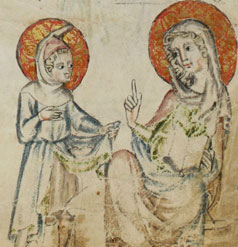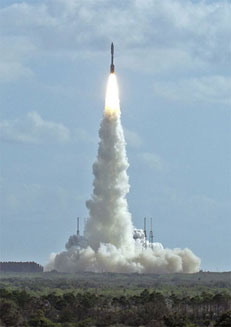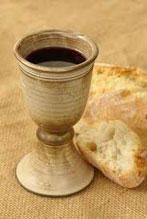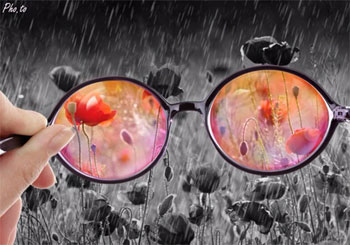
At the Wedding by Deborah Beach Giordano
On the third day...
 The author of John’s Gospel begins the introduction to Jesus’ public ministry by telling us that what happens next took place on “the third day.”
The author of John’s Gospel begins the introduction to Jesus’ public ministry by telling us that what happens next took place on “the third day.”
Oh ho! We hear those words and are immediately on the alert: What was that?
The phrase leaps out at us like a gazelle that suddenly appeared — then vanished amid the mundane details of Galilean social life. A wedding reception, empty wine jugs, tipsy guests, idle conversation; an average day with minor problems …. Why are future echoes of that distant “third day” sounding now?
 We weren’t expecting anything like that, not so soon, no hints of the Resurrection — nor the suffering preceding; no betrayals or trials or crucifixions — not here amid the noise and distractions and general celebration; not in this place or time. In fact, we’re not quite sure what it is that we saw.
We weren’t expecting anything like that, not so soon, no hints of the Resurrection — nor the suffering preceding; no betrayals or trials or crucifixions — not here amid the noise and distractions and general celebration; not in this place or time. In fact, we’re not quite sure what it is that we saw.
With those words the author has very deftly situated us right alongside those who were there. We are as surprised, confused, and uncertain as the rest of the wedding guests.
The Setting
Jesus is sitting at one of the tables, fiddling with an empty cup, laughing and joking with his friends. If there were a photograph, he’d be in the background, half-hidden behind the bridal couple; not in the spotlight, of no special interest, just another face in the crowd. Most people wouldn’t even remember that he was there.
But he was. The Lord Christ was in our midst, unnoticed. Miracles occurred right under our noses, and we were blind as moles. We didn’t see divine blessings — didn’t even know what had happened.
That is often still the case, today.
Now, some people did know what Jesus had done that day: the waitstaff knew, the disciples knew. And, of course, Mary, his mother, knew: she was the one who initiated the remarkable transformation. (As an aside: Speaking as a mom, I find it infinitely charming that the Lord agreed to do what he could to make his mother happy.)
The First Miracle?
But that’s a curious thing. Although the author tells us this that was the first of Jesus’ divine signs, Mary seemed quite confident that he could resolve the problem. How did she know?
 We might say that she had faith; that’s the traditional reading. But her comment is made so casually, a gentle nudging, rather matter-of-fact: Come on, I know there’s something you can do. It’s as if she’s had experience; as if the miraculous is, with Him, routine.
We might say that she had faith; that’s the traditional reading. But her comment is made so casually, a gentle nudging, rather matter-of-fact: Come on, I know there’s something you can do. It’s as if she’s had experience; as if the miraculous is, with Him, routine.
In the early days of the Christian tradition, stories of the childhood of Jesus were in circulation — none of which were received into the canon. Many are charming, some are alarming: not all of them end happily. These “apocryphal” tales describe how the little boy — fully human as well as fully divine — learns what he is capable of doing. Some of his childish miracles bring abundance and new life, others bring grief and pain.
Though they are not chronicles of “what really happened,” for me these stories confirm that the adult Jesus was aware of his abilities and was mindful of how to use them. He did not act thoughtlessly or in ignorance, but with wisdom and understanding. Through lived experience the Lord had learned that words can cut and wound, or comfort and heal; that anger is destructive, but compassion gives life. He understood the enormous potential of holy power that, once released, cannot be recalled.
Initiation Sequence
This explains the author’s emphasis on “the third day.” In turning the water into wine, publicly revealing Who he was, the Lord set off a series of events that would lead, inexorably, to the Cross and, in turn, to Easter morning. Once the Power was released into the world, there was no opting-out, no turning back, nothing could stop it; the launch sequence had begun: Christ’s mission would proceed according to the divine plan.

This initial “third day” was a catalyst for that holy Third Day — and every day in between (as well as all of the days that follow). In a seemingly insignificant, though impressive, miracle, discretely arranged and apparently unclaimed, the transformation of the world began.
But hardly anybody noticed.
We, sitting among the other guests, weren’t really sure what we saw — or if we saw anything; like glimpsing a gazelle dashing through the garden. It all happened in a flash, quite suddenly. Maybe a spark of sunlight reflected oddly in the wine newly poured by the waiter. Perhaps a taste, a swallow, a surprised glance into the cup, a comment: “Where did this wine come from? It’s leagues better than the one they served before.” Perhaps there was something, but who could be certain? And, as many of those present had dulled their palates with much mediocre wine, they had no taste for the fine new one.
It is Done
From Cana, Jesus’ Way now formally begins; it will take him to Jerusalem, to Gethsemane, to Calvary, and to the Resurrection. It would seem that, after the wedding miracle, the Lord might well have declared, “It is done,” — for in this Act all His other works were set in motion; the rest of His mission would follow.
His time had come. The holy power was unleashed.
Pouring Forth
 It is from this point forward, in John’s telling, that Jesus’ ministry really takes off; growing greater, expanding outward from the local region, reaching Samaria and the farther provinces of Judea. Through His word a child’s life is restored, the hungry are fed, the crippled walk, and — at His touch, a blind man is given sight. Alight with holy passion, He challenges religious profiteers, debates priests and theologians, persuades the doubtful, rescues the fallen, inspires and encourages ever-increasing multitudes.
It is from this point forward, in John’s telling, that Jesus’ ministry really takes off; growing greater, expanding outward from the local region, reaching Samaria and the farther provinces of Judea. Through His word a child’s life is restored, the hungry are fed, the crippled walk, and — at His touch, a blind man is given sight. Alight with holy passion, He challenges religious profiteers, debates priests and theologians, persuades the doubtful, rescues the fallen, inspires and encourages ever-increasing multitudes.
Wherever he goes, those who encounter Jesus are transformed by his presence: some, in glorious, soul-renewing ways — like water into wine. Others find their teeth set on edge: the mean-spirited, the hard-hearted, the smugly self-certain become angry, suspicious, and antagonistic. Meeting the Lord changes lives.
Typical
John’s Gospel is the only one that tells of the wedding in Cana, and describes it as “the first” of Jesus’ divine signs. Perhaps we might say it was of the primary sort: typical of the Lord’s miracles, exemplifying the character of the deed and the Doer. There was no spotlight or grandstand, no shouting or self-aggrandizement, only a Gift, freely given. A blink and you would have missed it, perhaps felt only a subtle change — a sudden smile, a spark of joy, a flicker of warm remembrance — and never recognized its Source. But you would be blessed, just the same. That’s how Jesus worked.
The Wedding Feast
Perhaps there is another meaning to be drawn from Jesus’ first miracle having taken place at a wedding celebration. It signifies an occasion of joy and delight — and even mystery; festivities founded in love, sustained by hope and promise.

Love unleashes holy Power, infusing us with greater wisdom and profound understanding. Worldly cynicism describes the experience as somehow defective or distorted: “looking through rose-colored glasses,” but do we not, in fact, see more clearly when we are deeply in love? The sky is bluer, the grass greener, the people kinder, the wine sweeter. Beauty shines forth where ever we look; we are filled with compassion and tenderness, enlivened with creative imagination: all things are possible.
Love is a kind of holy intoxication — not drunkenness or incapacity, but a gentle merriment. It is as if we’ve supped from a chalice of sacred wine and been transformed into a divine energy source: blessings stream forth from us to everyone we meet. That’s how Jesus worked.
The First Supper
Another difference between John’s Gospel and the synoptics is the absence of what we know as “the Last Supper;” the meal Jesus shared with his disciples on the night before his arrest and crucifixion. Instead, there is the wedding feast — which, I suggest, defines Christ’s message; revealing, in a single act, the style and significance of Jesus’ ministry. It is a celebration of love: a joy-filled community of friends and neighbors and people we’ve only just met.
The reality of what is called Jesus’ sacrifice was in His giving of His life to us: living with us, walking with us, celebrating with us, even to sorrowing and dying with us. From the initial divine sign on that first “third day" to the glorious third day of Easter morning, Christ’s Gospel was the same: a celebration of love; of God’s enduring, passionate love for us.
All who have partaken of Christ’s message go forth as if from a sacred party — with merry hearts, intoxicated with love, tipsy with divine delight, infused with holy power. We follow His Way of compassionate wisdom, empowered, inspired, fearless and free.
May your spirit always drink from the Cup of holy joy,
Deborah ✝
Suggested Spiritual Exercise
Allow yourself to fall in love with God.